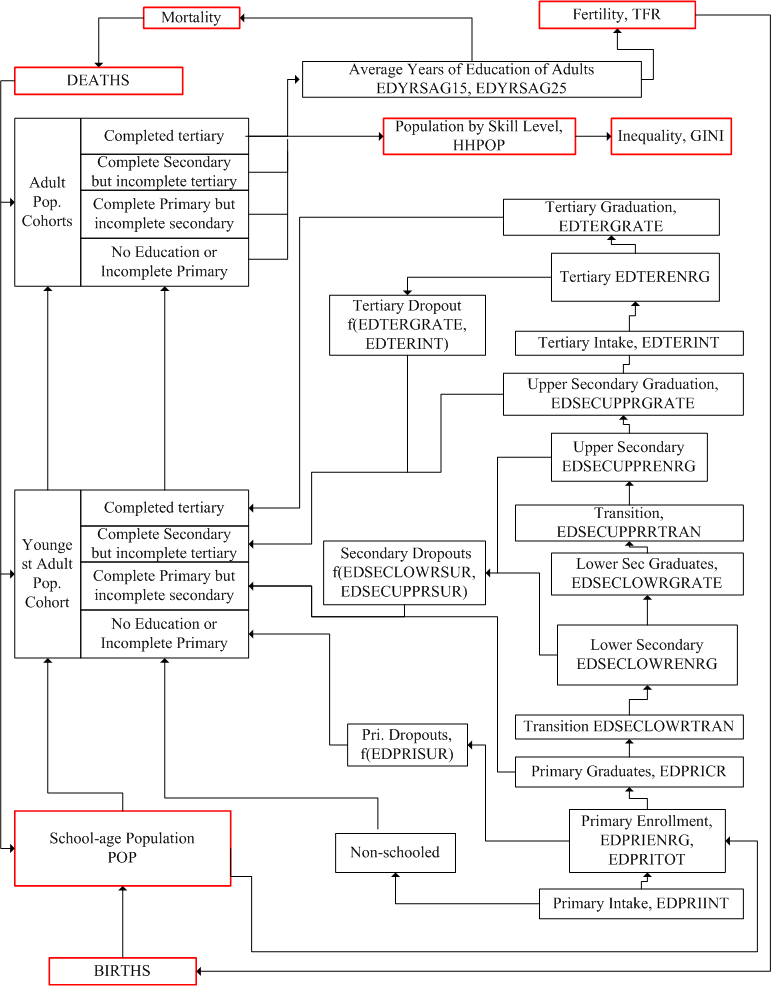International Futures Help System
Education Attainment
Attainment
The algorithm for the tracking of education attainment is very straight-forward. The model maintains the structure of the population not only by age and sex categories, but also by years and levels of completed education. In each year of the model’s run, the youngest adults pick up the appropriate total years of education and specific levels of completed education. The model advances each cohort in 1-year time steps after subtracting deaths. In addition to cohort attainment, the model also calculates overall attainment of adults (15+ and 25+) as average years of education (EDYRSAG15, EDYRSAG25) and as share of people 15+ with a certain level of education completed (EDPRIPER, EDSECPER, EDTERPER).
One limitation of our model is that it does not represent differential mortality rates associated with different levels of education attainment (generally lower for the more educated). [1] This leads, other things equal, to a modest underestimate of adult education attainment, growing with the length of the forecast horizon. The averaging method that IFs uses to advance adults through the age/sex/education categories also slightly misrepresents the level of education attainment in each 5-year category.

[1] The multi-state demographic method developed and utilized by IIASA does include education-specific mortality rates.
 International Futures at the Pardee Center
International Futures at the Pardee Center